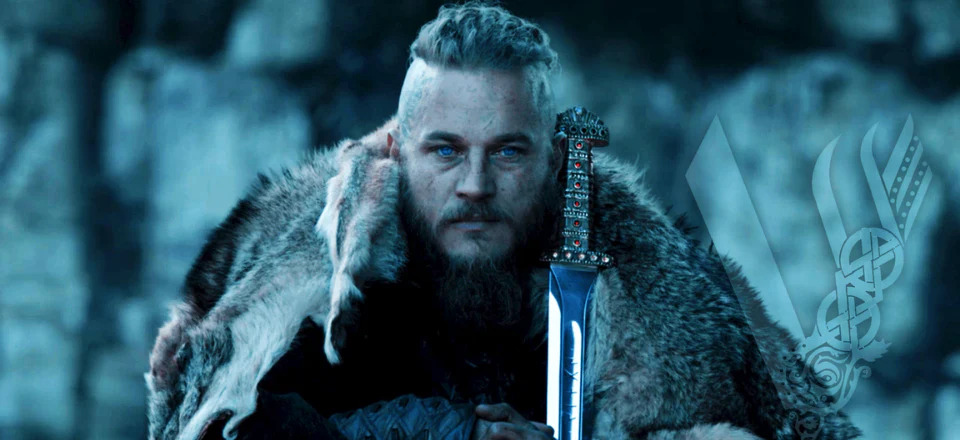The Real Ragnar Lothbrok

The Norse Sagas start in legend and end in history, with diversions into tales of adventure and chivalry throughout. But the Saga of Ragnar Loðbrók neatly straddles the transition from the purely legendary to the definitely historical: it begins by anchoring the future wife of Ragnar in the greatest of Germanic/Norse legend cycles, the story of Sigurd the Dragon Slayer and Brynhild (ignoring the difficulty of Sigurd and Brynhild belonging to a time four centuries earlier), and ends with the sons of Ragnar, men such as Ivar the Boneless and Sigurd Snake-in-the-Eye, who are undoubtedly historical characters.
Whether Ragnar himself was a historical character remains an open question. While a group of Viking war chiefs were known as sons of Loðbrók, this could refer to a tribal founder rather than their actual paternal father. But if Ragnar was real, then he probably first appears in the historical record in 845, when a Viking chieftain named ‘Reginheri’ in Frankish sources led 120 longships up the River Seine to attack Paris. According to the French chroniclers, this Ragnar succumbed to the plague that devastated the Vikings besieging Paris.
But ‘Ragnar’ would prove as difficult to kill as a Hollywood villain. He pops up again in the following decades, raiding Scotland and the Isles, settling in Dublin, attacking Anglesey and, finally, dying in a snake-filled pit in York, England. Totting it all up, Ragnar appears to have died at least five times during his career.
So the suspicion must be that a series of different Viking chieftains who shared similar names had their stories conflated into one semi-legendary character: Ragnar Loðbrók. Once this process began, the gravitational pull of a good hero with name recognition would ensure that other tales would be ascribed to him, in the same way that Arthur, at most a war leader of the Britons against the invading Anglo-Saxons, became the exemplar of medieval chivalry and the ideal of kingship for the very people who had defeated his forebears.
With the modern lionization of Vikings, it was only a matter of time before Ragnar Loðbrók would be reimagined for the screen. Vikings makes for great television but, even more than the sagas, it conflates different times and characters, making the historical Rollo, the first ruler of Normandy, Ragnar’s brother and contemporary when in reality Ragnar came two generations before Rollo. But such tale making is in keeping with the writers of the sagas: they would have enjoyed Vikings as much as we do.
0 Comments